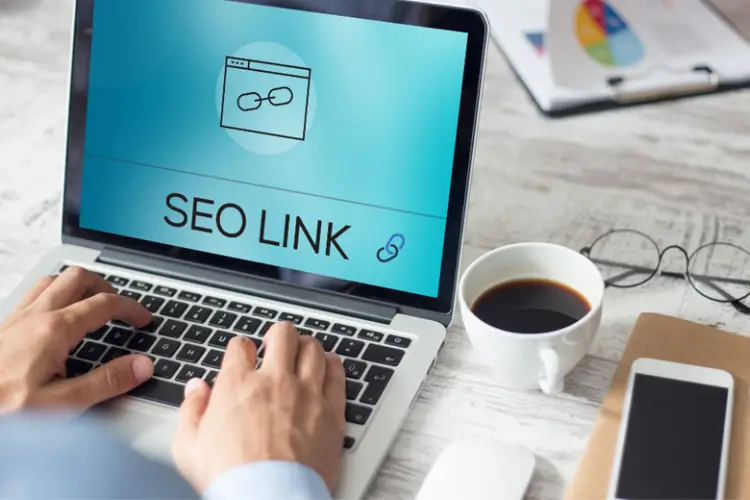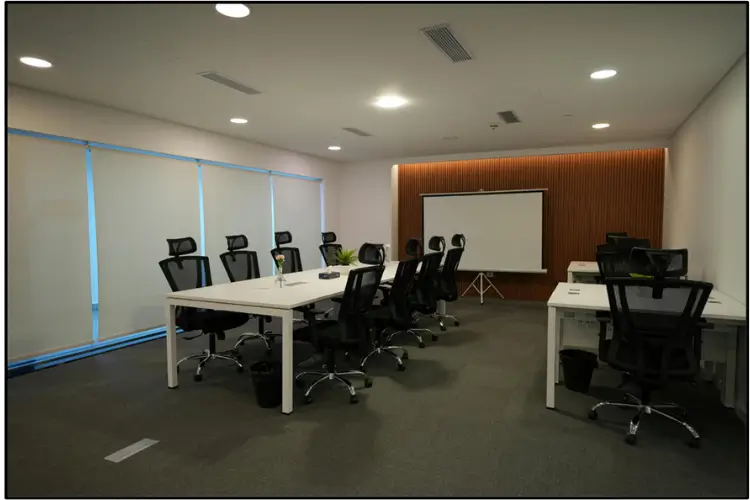In today’s competitive digital marketplace, local businesses need every advantage they can get to stand out from the crowd. According to recent data, local businesses that invest in SEO can boost their visibility significantly, with 68% of online experiences beginning with a search engine. Linkhouse is a Polish platform that connects advertisers with publishers, offering tools for effective link building and SEO content placement.
This statistic highlights why implementing effective local business SEO strategies has become non-negotiable for small businesses wanting to attract customers in their area. Link building remains one of the most powerful yet challenging aspects of improving your online presence.
Why Local Businesses Need White-Hat Link Building in 2025
Building a strong backlink profile is essential for local businesses looking to improve their search visibility and attract more customers. However, not all link-building approaches are created equal.
When it comes to link-building strategies, focusing on quality over quantity is crucial. A few high-authority, relevant backlinks will do far more for your local business than dozens of low-quality links from unrelated websites.
Using a white hat link building service can help local businesses develop an ethical approach to gaining quality backlinks without risking Google penalties. These services focus on creating genuine connections with relevant websites rather than using manipulative tactics that could harm your business in the long run.
White-Hat vs. Black-Hat Techniques
White-hat link-building techniques follow search engine guidelines and focus on providing value to users. Black-hat techniques, on the other hand, attempt to manipulate search rankings through deceptive practices that violate guidelines.
Impact on Local Search Rankings
For local businesses, backlinks from other local organizations carry significant weight in search algorithms. They signal to Google that your business is an established part of the local community.
With this foundation in place, let’s explore our first actionable white-hat link-building strategy that can immediately elevate your local presence.
Strategy #1: Local Resource Page Acquisition
One of the most effective white-hat link-building strategies for local businesses is getting featured on resource pages. These are pages specifically designed to list helpful resources for a particular community or industry.
Finding Community Resource Pages
To identify potential opportunities in your area, start by searching for terms like “[your city] resources,” “[your industry] resources in [your city],” or “[your city] helpful links.”
Creating Content Worthy of Inclusion
Resource pages typically want to feature genuinely useful content. Create guides, tools, or information specifically tailored to your local community that provides real value to residents.
Effective Outreach Templates
When reaching out to resource page owners, focus on how your content will benefit their audience rather than how their link will benefit you. Include a brief explanation of your resource and why it would be valuable to their visitors.
While resource pages offer excellent opportunities for contextual links, don’t overlook the foundation of your link profile that comes from properly optimized directory listings.
Strategy #2: Local Business Directories Beyond Google
Directory listings remain an important component of any local business’s link-building strategy, providing consistent citations that reinforce your business information across the web.
Industry-Specific Directories
Beyond general business directories, seek out industry-specific directories relevant to your business type. These specialized directories often carry more weight for local business SEO than general listings.
Optimizing Directory Profiles
When creating directory listings, ensure complete consistency in your NAP (Name, Address, Phone) information. Include a detailed business description that naturally incorporates your primary keywords.
Prioritizing High-Value Directories
Not all directories offer equal value. Focus on authoritative directories with strong domain ratings that are relevant to your industry or location rather than submitting to hundreds of low-quality sites.
Beyond these structured directory opportunities, forming strategic relationships with other local businesses can unlock powerful content collaborations that naturally generate quality backlinks.
Strategy #3: Local Content Partnerships
Collaborating with complementary local businesses can create win-win opportunities to share audiences and build links through joint content efforts.
Identifying Collaboration Opportunities
Look for non-competing businesses that serve a similar customer base. For example, a wedding photographer might partner with florists, venues, and caterers on collaborative content.
Creating Co-Branded Content
Develop high-quality content pieces such as guides, interviews, or case studies that showcase both businesses. This might include “ultimate guides” to local services or expert roundups featuring multiple local businesses.
Maximizing Link Value
When publishing collaborative content, ensure that both parties agree to include relevant links back to each other’s websites in a way that feels natural and adds value for readers.
Content partnerships create valuable mutual benefits, but sometimes gaining visibility requires a more direct approach through community involvement and strategic sponsorships.
Strategy #4: Community Sponsorships with Link Benefits
Supporting local events, teams, or charitable causes not only demonstrates your commitment to the community but can also generate valuable backlinks to your business website.
Selecting Strategic Sponsorships
Choose sponsorship opportunities that align with your business values and target audience. Look for events or organizations that maintain active websites where sponsors receive recognition.
Maximizing Sponsorship Link Opportunities
When negotiating sponsorships, explicitly request link inclusion as part of your recognition package. This might appear on sponsor pages, event listings, or in blog posts about the sponsorship.
Tracking Sponsorship ROI
Measure the return on investment from your sponsorships by tracking not only the link value but also the referral traffic and conversions generated from these partnerships.
Once you’ve established community connections through sponsorships, leverage your local expertise by producing data-driven content that naturally attracts links from authoritative sources.
Strategy #5: Create Link-Worthy Local Data Reports
Original research and data about your local market can become powerful link magnets, especially when presented in a way that makes the information easy to understand and share.
Identifying Local Data Opportunities
Consider what unique data your business might have access to or could collect. This might include pricing trends, consumer behavior patterns, or industry statistics specific to your region.
Formatting Data for Maximum Impact
Present your findings in multiple formats to maximize shareability. This might include a comprehensive report, an infographic summarizing key findings, and shareable social media graphics.
Targeted Outreach for Data Promotion
Identify local journalists, bloggers, and business organizations who might find your data interesting and reach out with a personalized pitch explaining why their audience would value your insights.
While comprehensive data reports appeal to analytical minds, transforming complex local information into eye-catching infographics can capture attention and generate links from a wider audience.
Strategy #6: Engage with Local Bloggers and Influencers
Partnering with local bloggers or micro-influencers can be a powerful way to earn relevant backlinks while tapping into niche, engaged audiences in your area.
Finding the Right Partners
Search platforms like Instagram, local Facebook groups, or regional lifestyle blogs for influencers who regularly promote local products or services.
Building Authentic Relationships
Avoid transactional outreach. Instead, engage with their content, offer them something valuable (like a service trial or exclusive insight), and explore collaborative content opportunities.
Example Collaborations That Earn Links:
- Guest interviews on their blog
- Local business “spotlight” features
- Social media posts linking back to your site’s blog
This strategy works best when it’s relationship-first, not link-first—those backlinks will come naturally when value is exchanged.
Strategy #7: Host or Co-Host Local Events
Events create organic buzz, media coverage, and linking opportunities from local publications, calendars, and community partners.
Types of Events That Attract Links
- Workshops or classes related to your niche
- Local meetups or networking nights
- Community clean-up or charity drives
Promoting Events for Backlinks
Submit your event to local news outlets, event directories, and neighborhood sites. These typically provide dofollow links when promoting local happenings.
Maximize Link Potential
Include a dedicated event landing page on your site. This creates a central source for all event-related backlinks.
Strategy #8: Earn Mentions from Local News Sites
Being featured in your local press is one of the most authoritative ways to earn high-quality backlinks that also drive real traffic.
How to Attract Coverage
- Send press releases for noteworthy business milestones (e.g., grand opening, community initiative, awards)
- Pitch story angles to local journalists relevant to your industry
- Provide commentary as a local expert on trending topics
HARO and Alternatives
Use platforms like HARO (Help a Reporter Out) to respond to journalists’ queries looking for local business insights or case studies.
Strategy #9: Create a Local “Best Of” List or Awards
People love recognition, and this strategy builds goodwill and backlinks at the same time.
Building the List
Create a blog post like “Top 10 Dog-Friendly Cafes in [Your City]” or “Best Home Service Providers in [Your City].” Include deserving local businesses and link to their sites.
Outreach for Organic Links
Notify the businesses featured and encourage them to share or link to the list. Many will promote it on their own blogs or social channels, which can result in quality backlinks.
Bonus Benefit
You position yourself as an industry authority, and it increases the chances of reciprocal recognition in future lists.
Strategy #10: Sponsor Local Scholarships
Offering a small scholarship to local students can generate links from high-authority .edu domains and education-focused resources.
How to Launch a Scholarship Page
Create a dedicated page on your website outlining eligibility criteria, deadlines, and the purpose of the scholarship.
Promoting the Scholarship
Reach out to local high schools, community colleges, and universities with a pitch to list your scholarship on their websites.
Why This Works
.edu backlinks are among the most trusted on the web, and local educational institutions are often happy to list scholarship opportunities.
Final Thoughts on Building Local Links That Last
Implementing effective white-hat link-building strategies requires patience, consistency, and genuine relationship building within your local community. By focusing on creating valuable content and forming meaningful partnerships with other local organizations, you can build a strong backlink profile that supports sustained organic traffic growth.
Remember that the most successful link-building efforts are those that align naturally with your overall business goals and community involvement. When approached correctly, link building becomes less about chasing algorithms and more about establishing your business as a trusted local resource.
The strategies outlined here provide a foundation for developing a sustainable approach to local link building that will continue to yield results long after the initial work is done.
Common Questions About Local Link Building
What links are different for local businesses?
White hat link building for local businesses focuses on geographic relevance along with topical relevance. Links from other local organizations, community websites, and regional publications carry special weight in local search algorithms and help establish your business as part of the community.
How many backlinks does a local business typically need?
There’s no magic number, as quality always trumps quantity. A small business might rank well with just 20-30 high-quality, relevant backlinks from local sources, while hundreds of low-quality links could harm your rankings and trigger penalties.
While social media links are typically nofollow (meaning they don’t directly pass SEO value), they remain valuable for building relationships that lead to natural backlinks. Your social presence also affects your overall online visibility and brand recognition in your local area.




